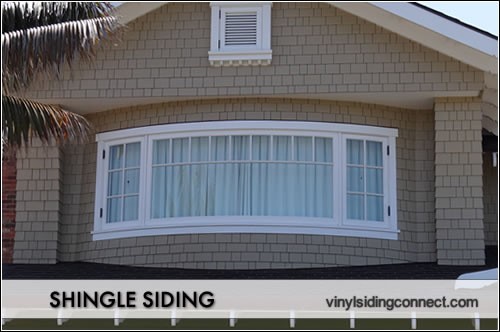Many people find it confusing when shopping for cedar or wood because they don’t know the difference between shake shingle siding. While it may appear that the terms are interchangeable, the truth is that there is a distinction between shake and shingle siding that makes it worthwhile to know how to distinguish between the two. By understanding the differences – and similarities – of siding shingles vs. shakes, you’ll be better informed about which product will truly work best with your home.


Basics Of Shake Shingle Siding
The primary difference between these two types of cladding is how the individual pieces are made. Shingle siding is sawn from large blocks of wood, as opposed to shake siding, which is split from the block of wood with a mallet. This results in the differing appearance between siding shingles vs. shakes. See below for product breakdowns.

Shake Shingle Siding Cost
Price Range: $3.50 – $6.50 psf installed
Homeowners can expect materials and labor to run you in the neighborhood of $3.50 – $6.50 per sq. ft., with about $3 of that cost being attributed to installation costs. Homeowners can expect to pay more in maintenance and repair costs for any type of wood than you would for other options, such as vinyl or aluminum.

Shingle Siding
Shingles have the same uniform thickness, a smooth surface and are usually 3/8” – ½” thick at butt. They are more uniform in appearance and therefore provide a more refined look. Most shingles are roughly 1/2″ thick and vary in length depending on the brand. They are available in a wide variety of materials, including cedar, pine, vinyl, engineered wood or fiber cement.

Shake Siding
More rustic, thicker in some areas and grooved, not uniform in thickness, usually ½” – ¾” thick at butt. There are two types of shakes however – hand-split shake is less uniform and more rustic looking, while taper-sawn shake looks more like a shingle because they are more refined. There are also hand-split and resawn shakes that are split on one side and sawn on the other and fall between the two in terms of how rustic they look. Shakes are more natural-looking and not of uniform thickness. This means that shake results in a more rustic, natural or country look. In general, you can expect shake to last a little longer than shingles, primarily because they are thicker, but the difference is not that substantial.

Shake Shingle Siding – Differences In Appearance
Overall appearance is the primary difference with shake shingle siding. Here is what you can expect from each cladding options:

Uses for Wood Siding Shingles vs. Shakes
There are no real differences in where you can use one product over another. Both shingles and shake can be used for roofing, as well as to cover exterior walls. The main difference between them is the overall look they will lend to the home once installed. Wood or cedar shingles tends to work better with a larger variety of housing styles, since they are not as rustic looking. Shakes, on the other hand, are best used with homes in which a more rustic look is desired, for example country-style cottages. There are some minor differences in how the two different types of wood are installed.

Installation And Durability
Both wood shingles and shake are relatively equally as durable, although shakes may last a bit longer due to their thicker nature. One thing to keep in mind, however, is that since shake is less uniform in size and thickness, they don’t lay quite as flat as shingles when they are installed. This makes it easier for an individual shake to be pried off by wind or for moisture to penetrate between the shakes.
Due to this fact, when cedar shake siding is used on a roof, a layer of felt paper needs to be installed between each course of shakes to protect against water penetration (this is called interleaving). The joints between the shakes must also be offset by around 1 ½” or more between courses so that water doesn’t run down between each individual shake. Shingles, by contrast, don’t require the interleaving of felt paper between courses. Because of this, cedar shingles are installed with three overlapping layers to protect from weather penetration, while cedar shakes only require two layers plus the felt for similar protection.
Related Topics
Shakes and Shingles
Vinyl Pricing & Costs
Estimator For Project Totals




